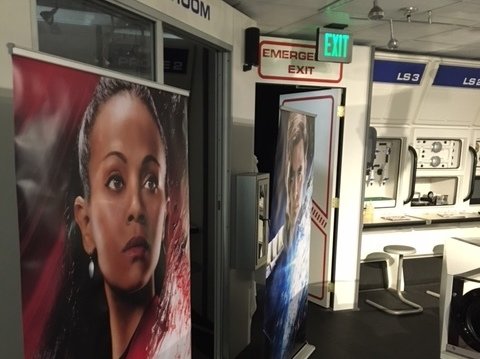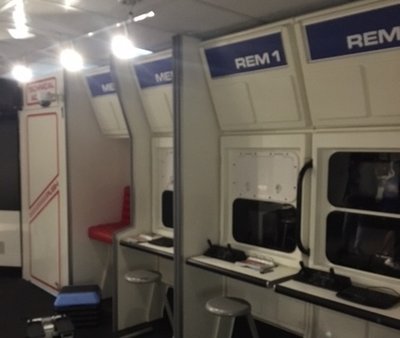
Museums across the nation are already bracing for the side effect of a new Star Trek release, which means more people trying to come in and figure out if what they saw in the movie is even humanly possible.
Sure, our modern smartphones collectively have more functions than a Star Trek communicator and can give us information literally at our fingertips, but going straight to the experts is generally the better option if you don’t want to be the person who believes everything they read on the internet.
Already preparing for the post-Star Trek exhibit is the Columbia Memorial Space Center in Downey, CA, who will open up their Rocket Fever exhibit on August 20th to the public, but gave Al Borde exclusive access to the preview, and explaining that, yes, despite Star Trek not being wholly realistic (you didn’t think there were actual Klingons around, did you?) the movies do manage to peak science geeks’ interests.
 The museum and memorial center is a dedicated learning center for all ages, offering a NASA simulator for up to 40 people and a robotics course. With all that in mind, it begs the question: How does a Star Trek film by the director of The Fast and the Furious get anyone excited about actual, hard science? Won’t it just make them wish for a sequel introducing Captain Jean-Luc Picard as played by Vin Diesel?
The museum and memorial center is a dedicated learning center for all ages, offering a NASA simulator for up to 40 people and a robotics course. With all that in mind, it begs the question: How does a Star Trek film by the director of The Fast and the Furious get anyone excited about actual, hard science? Won’t it just make them wish for a sequel introducing Captain Jean-Luc Picard as played by Vin Diesel?
Benjamin Dickow, President and Executive Director of the center, gladly supports the film’s expectedly chaotic and explosive take on the franchise:
“I think Star Trek has really blown up the emotion behind science. Now that it’s so permeated in culture, I think it’s inspiring more people than before. The first step is just getting that elementary or junior high kid to stick with science to get into science in college.”
His excitement was further palpitated as he was handed a Star Trek communicator straight from the set of the movie.
“When you talk to scientists and they talk about their influence of science fiction, what they really talk about is the emotional connection to those stories and how that sort of spun them into getting into science in the first place… But, to get in the door? You need that emotional connection that Star Trek or Star Wars–the bigger franchises–can bring.”
 In a culture where a rapidly growing science fiction TV shows is actually a complete satire of science fiction’s oldest and tried ideas, how will Star Trek get anyone excited about science?
In a culture where a rapidly growing science fiction TV shows is actually a complete satire of science fiction’s oldest and tried ideas, how will Star Trek get anyone excited about science?
“In those early science fictions days,” Dickow continued, “You had a time period where people were still super in awe of science and what science could do. Fast forward 125 years, where we are so used to science and scientific breakthroughs and advances all the time, I don’t think that a writer writing about hard future science is as mind blowing. We’ve seen it already.”
In a world like today where technological breakthroughs come, go, and sometimes are never heard of again, Dickow says that Star Trek is precisely the kind of Sci-Fi we need to inspire the generations of today:
“Sitting in a movie theater and being like ‘Holy crap, this is so freakin’ cool,’ and, ‘Yeah, I want to be one of these exciting people’… We now have people who are super jazzed about space travel and science because of big franchises like Star Trek.”
And, for the super nerds who still debate the plausibility of hard science between the two Star franchises, Dickow says Star Trek was totally better than Star Wars.
For our full spoiler free review, check it out here.

